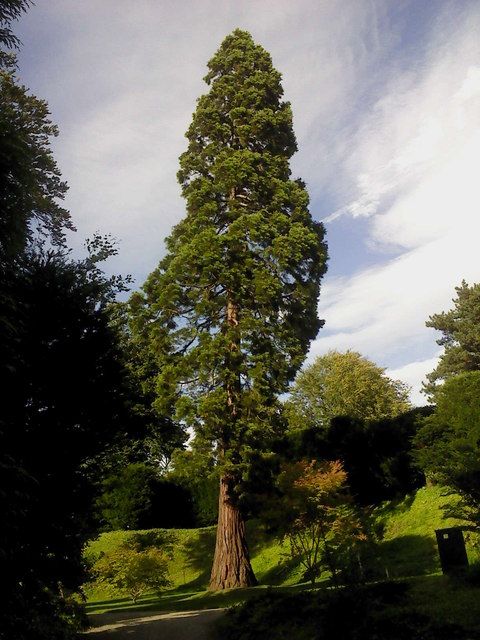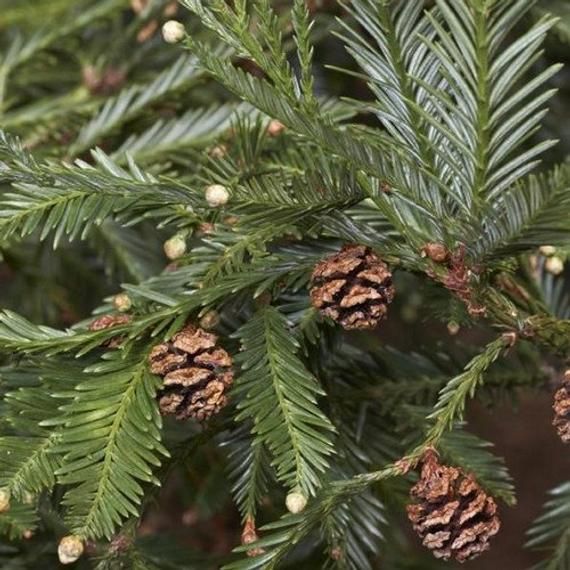Sequoia sempervirens: The Majestic Coastal Redwood

Sequoia sempervirens, commonly known as the coastal redwood, is a magnificent coniferous tree species native to the coastal regions of California and Oregon.
Renowned for its towering height, immense girth, and longevity, this iconic tree holds a special place in the natural landscape and human imagination.
In this comprehensive article, we will delve into the botanical intricacies, habitat preferences, life cycle, ecological importance, conservation status, and care guidelines for Sequoia sempervirens.
Botanical Description
Sequoia sempervirens is characterized by its massive size, straight trunk, and deeply furrowed, reddish-brown bark.
The tree typically reaches heights of 200 to 300 feet (60 to 90 meters) or more, making it one of the tallest tree species on Earth.
The foliage consists of flat, needle-like leaves arranged in spirals along the branches. The leaves are dark green above and paler underneath, giving the tree a distinctive appearance.
Coastal redwoods produce small, spherical cones that contain seeds and are typically found high in the canopy.
Habitat and Distribution
Coastal redwoods are primarily found in the foggy, humid coastal regions of northern California and southwestern Oregon, where they thrive in the mild, temperate climate.
They prefer moist, well-drained soils, often growing in alluvial flats, river valleys, and along streams and creeks.
Sequoia sempervirens is a keystone species in its native habitat, forming dense forests known as redwood groves, which provide habitat for a wide range of plant and animal species.
Life Cycle and Phenology
As a long-lived tree species, Sequoia sempervirens has a slow growth rate and can live for hundreds or even thousands of years.
The life cycle begins with seed germination, typically occurring in moist, shaded areas on the forest floor.
Young redwoods grow rapidly, reaching heights of several feet per year in favorable conditions.
However, growth slows as the tree matures, with older specimens adding only a few inches of height annually.
Flowering and cone production typically occur in late winter to early spring, with seeds dispersed by wind or animals.
Ecological and Cultural Importance
Coastal redwoods play a crucial ecological role in their native habitat, providing habitat for numerous plant and animal species.
The dense canopy of redwood forests creates a unique microclimate, with cooler temperatures and higher humidity levels than surrounding areas.
Redwoods also act as carbon sinks, sequestering large amounts of carbon dioxide from the atmosphere and helping mitigate climate change.
Additionally, Sequoia sempervirens holds cultural significance as a symbol of strength, resilience, and natural beauty, inspiring artists, poets, and conservationists around the world.
Conservation and Threats
While Sequoia sempervirens is not currently listed as threatened or endangered, habitat loss, logging, and climate change pose significant threats to coastal redwood populations.
Historic logging practices have greatly reduced the extent of old-growth redwood forests, with only a fraction of the original forest remaining today.
Urbanization, agriculture, and land development also contribute to habitat fragmentation and degradation, further impacting redwood ecosystems.
Climate change poses additional challenges, including increased temperatures, drought, and wildfire risk.
Conservation efforts focused on habitat preservation, restoration, and sustainable forest management are essential for safeguarding the future of coastal redwoods.

Caring for Sequoia sempervirens
Sunlight
Plant coastal redwoods in a location that receives full sun to partial shade.
While they prefer sunny conditions, young redwoods may benefit from partial shade in hot, dry climates.
Watering
Provide regular water during the establishment period, keeping the soil consistently moist but not waterlogged.
Once established, coastal redwoods are relatively drought-tolerant but may require supplemental watering during periods of extended drought.
Soil
Plant in well-drained, loamy soil with a slightly acidic to neutral pH.
Coastal redwoods prefer soils that are rich in organic matter and have good drainage.
Mulching
Apply a thick layer of organic mulch around the base of the tree to conserve moisture, suppress weeds, and regulate soil temperature.
Keep the mulch several inches away from the trunk to prevent rot.
Pruning
Prune coastal redwoods as needed to remove dead or diseased branches and maintain a healthy, balanced canopy.
Avoid pruning excessively, as this can stress the tree and reduce its overall vigor.
By following these care guidelines, you can cultivate healthy and resilient Sequoia sempervirens trees in your landscape, contributing to the beauty and ecological value of your outdoor space while honoring the legacy of these magnificent giants.
Whether planted as a specimen tree, windbreak, or focal point in a naturalistic garden, coastal redwoods are sure to inspire awe and admiration for generations to come.
Leave a Reply
You must be logged in to post a comment.